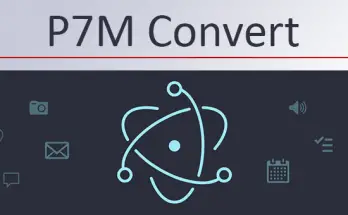Table of Contents
In this article we will try to provide an overview of the concept of web accessibility, i.e. the possibility of providing web services to those who are affected by disabilities and / or use auxiliary technologies.
In particular, after a brief introduction dedicated to the definitions and identification of the context, we will go into two fundamental contributions that today constitute the reference point of accessible web development in Italy: the Web Content Accessibility Guidelines (WCAG) of the W3C and the Linee Guida sull'Accessibilità degli strumenti informatici (Guidelines on the Accessibility of the IT tools) of the Italian Agency for Digital (AgID).
Definition
The term accessibility, if used in the IT field, defines the ability of computer systems to provide services and provide usable information, without discrimination, even by those who due to disabilities require assistive technologies or particular configurations.
Within a regulatory context, the reference to accessibility therefore refers to the inclusive practices of removing barriers that prevent interaction or access to websites by people with disabilities. These individuals may in fact encounter difficulties in navigating certain sites since the latter, if developed in a non-inclusive way, present architectural barriers (in the IT sense) that undermine the concept of universal use of internet sites; these barriers are almost always determined by the choice, made by programmers almost always involuntarily, not to take into account the possibility that some disabled users may use peripherals specifically developed to remedy the disability. It is therefore a problem linked to a very specific way of working and which can be solved effectively and permanently through a standardization process that aims to redefine the methods of implementation in an inclusive sense.
Current regulations
At European level, the reference standard for IT accessibility is EN 301549 - Accessibility requirements for ICT products and services, which entered into force on February 12, 2014 and subsequently updated in 2015, 2018 and 2019. For a rather comprehensive overview of the requirements of this standard, we invite you to read our dedicated in-depth analysis.
In Italy, the reference law for digital accessibility is Law no. 4 of 9 January 2004 which assigned to AgID (the Italian Agency for Digital, at the time known as the National Center for IT in the PA) a series of control, assistance and communication tasks, including:
- supervise the implementation of the aforementioned law;
- provide assistance to the Public Administration for the application of current legislation;
- issue technical rules, circulars and guidelines on the accessibility of IT tools;
- monitor the websites and mobile applications of the Public Administration;
- periodically report to the European Commission on the monitoring results;
- disseminate and promote the issue of accessibility in the Public Administration.
The turning point came on 10 August 2018, when Italy - with Legislative Decree no. 106, which amends and updates the aforementioned Law 4/2004 - transposes the EU Directive 2016/2102 of 26 October 2016, which aims to improve the accessibility of websites and mobile apps in the public sector of each UE Member State.
Among the many important innovations for administrations is the obligation to publish the Accessibility Declaration, through which it is necessary to indicate the compliance status of each site and mobile application with respect to the accessibility requirements provided for by Legislative Decree no. 106 and detailed within the guidelines; the decree also provides for the periodic publication, by 31 March of each year, of the accessibility objectives for the current year and the state of implementation of the plan for the use of telework (created according to the vademecum on smart working promoted by AgID) .
Directly linked to the Declaration of Accessibility, and particularly worthy of mention, is the introduction of the so-called feedback mechanism, which gives users the possibility to report problems relating to inaccessibility directly on the sites and / or mobile apps made available by the Public Administration; in the event of a lack of or unsatisfactory response from the PA, the citizen has the possibility of resorting to an implementation procedure through a dedicated regulatory function (the Difensore Civico per il Digitale). This is a real assumption of responsibility by the public administration, which thus adopts the good practice known as continuous feedback (or constant feedback), common to many modern Agile development methodologies.
AgID Accessibility Guidelines
In compliance with the European Directive 2016/2102, AgID has issued the Guidelines on the Accessibility of IT tools, which came into force on 10 January 2020: the guidelines aim to direct the Public Administration towards a increasingly accessible service delivery.
The guidelines are divided into 7 focal points:
- Technical requirements for the accessibility of IT tools, divided into: Hardware, Web, Non-web documents, Software, Mobile Applications, Documentation and support services. With regard to these tools, a series of recommendations and clarifications on digital accessibility are made available and indications are provided on the workstations available to employees with disabilities having as technical reference the UNI EN ISO 9999: 2017 standard for the identification of technologies assistive.
- Verification of the accessibility of IT tools, which indicates the references to be used for technical checks of conformity of accessibility of IT tools which, pursuant to European Directive 2016/2102, are referenced to the European technical standard EN 301549 v. 2.1.2; the methodology for the subjective verification of the accessibility of websites and mobile applications (and related evaluation criteria) is also described.
- Instructions relating to how to fill in the Accessibility Declaration, which must be drawn up and published using a dedicated web application (https://form.agid.gov.it), created by AGID in compliance with the model established by the EU Directive 2016/2102 ; the regulatory references relating to the annual obligation for Public Administrations to publish the aforementioned accessibility objectives are also reported.
- Monitoring methodology, i.e. the detection activities that will be carried out by AgID to verify the compliance of the websites and mobile applications of public bodies with the accessibility requirements defined in Article 4 of the European Directive 2016/2102 (and relative presentation of results to the European Commission);
- Disproportionate burden, in which the specific cases that determine the possibility of opposing a disproportionate burden on the part of the Public Administration are examined. With the term "disproportionate burden" the EU Directive 2016/2012 (article 5) identifies the circumstances in the presence of which the providers can reasonably limit the accessibility of a website or mobile application: it is therefore a possibility of exemption ( exemption) from the obligation to comply with the legislation for the provision of certain specific services;
- Implementation procedure, where the issues relating to the contestation of the declaration of accessibility, the unsatisfactory outcome of the monitoring, the feedback mechanism.
The document is also accompanied by three annexes that contain the forms prepared by AgID for compilation by the Public Administrations:
- Annex 1. Website and mobile application accessibility declaration template.
- Annex 2. Self-assessment model.
- Annex 3. Products for class 22 of UNI EN ISO 9999: 2017 relating to communication and information management.
The guidelines were created taking into account the following national and international standards and regulatory references:
- ISO 9999:2016 “Assistive products for persons with disability -- Classification and terminology”
- Web Content Accessibility Guidelines (WCAG) 2.1
- EN 301549 V2.1.2 (2018-08) HARMONISED EUROPEAN STANDARD “Accessibility requirements for ICT products and services”
- UNI CEI EN ISO/IEC 17065:2012 “Conformity assessment — Requirements for bodies certifying products, processes and services”.
- UNI EN ISO 9999:2017 Assistive products for persons with disability - Classification and terminology
- Technical guidelines to the use of metrics for application software developed on behalf of PAs, published by AGID in June, 2018.
It's worth noting that implementing these standards can be no easy task, especially for novice website developers, which is why it is advisable to hire a specialized software development company with specific experience in Web Accessibility.
WCAG
Particularly important is the adoption of the latest guidelines issued by the W3C (Web Content Accessibility Guidelines, whose version 2.1 of 05/06/2018 is the most recent to date), which to date perhaps constitute the most important point of reference worldwide in terms of accessibility of web portals.
The WCAG guidelines revolve around the following key principles, which define the fundamental qualities required of an accessible website:
- Perceivable: information and user interface components must be presented to users in ways they can perceive. This objective is achieved through the following implementation methods:
- Textual alternatives. Provide textual alternatives for non-textual content.
- Timed media. Provide captions and / or other alternatives for timed multimedia content.
- Adaptable. Create content that can be presented in different ways, including through assistive technologies, without losing meaning.
- Distinguishable. Make it easier for users to view and listen to content by separating the foreground content from the background.
- Operable: the components and navigation of the user interface must be usable. This objective is achieved through the following implementation methods:
- Keyboard accessible. Make all functionalities keyboard operable (that is, without having to use other peripherals).
- Adequate availability of time. Give users sufficient time to read and use the content (that is, without any "timed" pages, popups or content).
- Convulsions and physical reactions. Do not develop content with techniques that are known to cause seizures or physical reactions. (specifically, reduce the intermittences to a maximum of 3 per second and allow the deactivation of any animation that is not essential for the full use of the contents).
- Navigable. Helping users to navigate and find content (i.e. take care of the layout at the level of titles, headings, focus elements, navigation menus, breadcrumbs, etc.)
- Input mode. Simplify the use of inputs other than the keyboard.
- Understandable: The information relating to the user interface must be understandable, as well as the operations that the site allows to perform. This objective is achieved through the following implementation methods:
- Readable. Make the text readable and understandable.
- Predictable. Create web pages that look and function predictable.
- Assistance in insertion. Help users avoid mistakes and facilitate them in their correction
- Robust: The content must be robust enough to be interpreted reliably by a wide variety of user agents, including assistive technologies. This objective is achieved through the following implementation methods:
- Compatible. Ensure maximum compatibility with current and future user agents, including assistive technologies.
Each implementation method provides three possible levels of compliance: A (minimum), AA (average) and AAA (maximum). This choice allows for an objective evaluation criterion that allows the guidelines to be a valid measurement parameter wherever requirements and compliance tests are required, as frequently required by design specifications, purchases, regulations and contractual agreements.
For reasons of space, we will not elaborate here on the purely technical aspects, i.e. the implementation details that allow - at the level of server-side and client-side software development - to reach the various levels of compliance required by the guidelines. For this purpose, however, we highly recommend reading the official reference guide: How to meet WCAG: quick reference, which provides an extremely specific and precise discussion of these aspects.
Conclusions
That's it for now: we hope that this in-depth analysis will help project managers and software developers interested in adopting inclusive methodologies to orient their projects in this sense, taking as a reference the implementation methods suggested by the guidelines that we have done our best to to introduce.
References
- Direttiva (UE) 2016/2102 del 26 ottobre 2016 relativa all'accessibilità dei siti web e delle applicazioni mobili degli enti pubblici
- D. Lgs 10 agosto 2018, n. 106 relativo all'attuazione della direttiva (UE) 2016/2102
- Linee guida sull’accessibilità degli strumenti informatici (Agenzia per l'Italia Digitale, 23/07/2020)
- Linee guida per lo sviluppo del software sicuro (Agenzia per l'Italia Digitale, 06/05/2020)
- Dichiarazione di accessibilità (Agenzia per l'Italia Digitale, 02/09/2020)
- Meccanismo di feedback (Agenzia per l'Italia Digitale, 29/07/2020)
- Smart working: vademecum per lavorare online in sicurezza (Agenzia per l'Italia Digitale, 17/03/2020)
- Guida tecnica all’uso di metriche per il software applicativo sviluppato per conto delle PA (Agenzia per l'Italia Digitale, 06/2018)
- UNI EN 301549:2018 - Requisiti di accessibilità per prodotti e servizi ICT (Comitato Europeo di Normazione, 18/10/2018)
- UNI EN 301549:2020 - Requisiti di accessibilità per prodotti e servizi ICT (Comitato Europeo di Normazione, 17/12/2020)
- Web Content Accessibility Guidelines (WCAG) 2.1 (W3C, 05/06/2018) (traduzione in lingua italiana)
- How to meet WCAG: quick reference (W3C, 05/06/2018)



